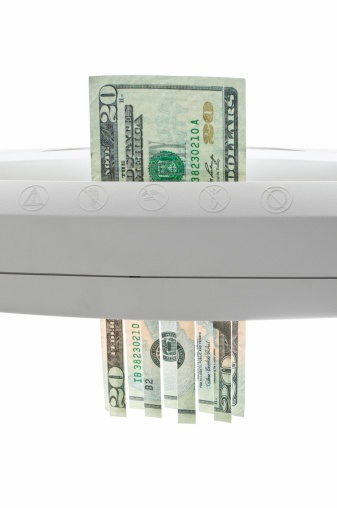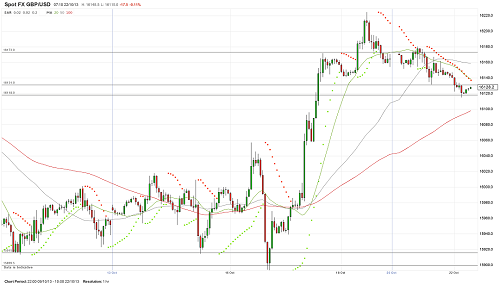London Gold Market Report
from Adrian Ash
BullionVault
Tues 22 Oct 07:55 EST
WHOLESALE gold held in a tight $5 range Tuesday morning in London, drifting around $1315 per ounce ahead of delayed data on US unemployment.
The monthly Non-Farm Payrolls report had been due more than two weeks ago. It was set for release Tuesday after Congress’s 3-month deal on the $16.7 trillion debt ceiling ended the shutdown of government services.
Alongside gold, world markets in equities, bonds, commodities and currencies also sat tight ahead of the US jobs data.
Silver prices slipped 1.1% from Monday’s near 2-week high of $22.33 per ounce.
“If the US September employment report, due on Tuesday, comes in surprisingly robust, it could trigger another sharp reversal in both gold and the US Dollar,” reckons Swiss bank and London market maker Credit Suisse in a note.
Amongst Western traders, “market participants lack conviction that gold could stage a decent performance going into 2014,” says a note from Russia’s VTB Capital, pointing to “expectations for gradually improving [interest rates] and completion of the Fed’s accommodative policy stance.
“There is little rationale in inflation hedging or safe haven buying at the moment. No one expects the [gold] market to rally in a similar fashion to the past decade with annual gains in excess of 10%.”
Positions held through the SPDR Gold Trust – the world’s largest exchange-traded gold fund (ticker: GLD) – shrank again Monday, with a further 11 tonnes shed from the gold needed to back its shares.
That took the month-on-month change in GLD assets to its worst drop since early August, down 4.4% to a new four-and-a-half-year low beneath 872 tonnes.
Over in China – the world’s No.2 gold consumer market, and likely to overtake India as No.1 in 2013 – “physical demand currently remains subdued,” says a note from ANZ Bank in Sydney, Australia.
Because “increasing interest [will show] ahead of Chinese New Year,” says ANZ, “it is unlikely to be evident before December.”
Meantime in India, premiums on gold bars – over and above the benchmark London price – today held at record highs above $120 per ounce, according to Reuters, as the government’s anti-import rules met increasing demand ahead of the key Diwali festival.
“Demand is picking up and supplies have dried up,” the newswire quotes Bachhraj Bamalwa of the All India Gems & Jewellery Trade Federation.
Yet jewelers are struggling to make sales, counters the Economic Times of India from Kolkata, saying that many retailers are using incentives to push jewelry sales.
“This festive season you can a win a trip to Dubai or get a brand new Skoda with the jewellery you buy,” says the paper.
Mehul Choksi of the giant Gitanjali chain says gold jewelry sales have fallen 30% compared with the same period in 2012.
“We do not see a sudden surge in demand coming this festive season,” he says. “The mood is very bearish.”
“Demand for bullion from the Middle East and Asia remains robust,” says Credit Suisse’s note today, “but we do not expect it to get close to the level of demand for physical bullion that the market experienced” in the first-half of 2013.
Adrian Ash
BullionVault
Gold price chart, no delay | Buy gold online
Adrian Ash is head of research at BullionVault, the secure, low-cost gold and silver market for private investors online, where you can fully allocated bullion already vaulted in your choice of London, New York, Singapore, Toronto or Zurich for just 0.5% commission.
(c) BullionVault 2013
Please Note: This article is to inform your thinking, not lead it. Only you can decide the best place for your money, and any decision you make will put your money at risk. Information or data included here may have already been overtaken by events – and must be verified elsewhere – should you choose to act on it.







